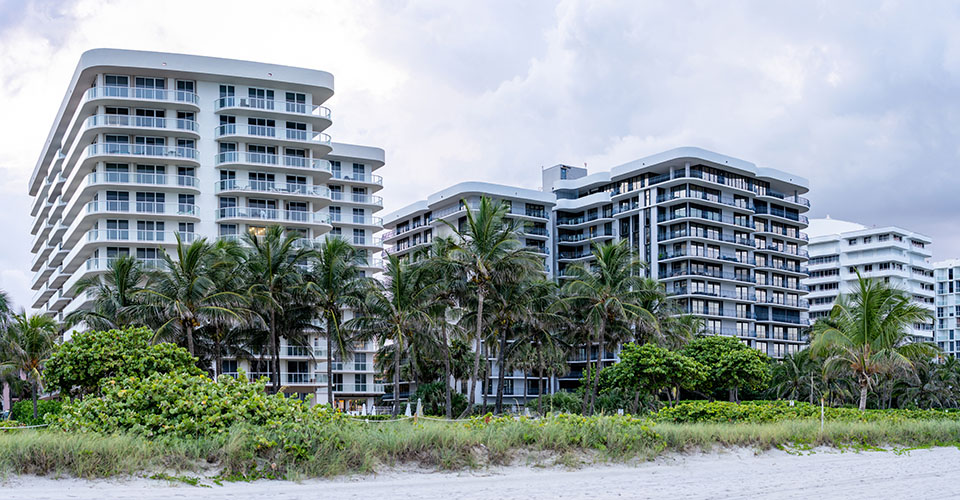The Orlando Law Group
Milestone Inspections

As the State of Florida looks to inspect all older multi-story residential buildings over the next year, it’s important you understand your options as a resident or the management association.
Called “Milestone Inspections,” nearly a million buildings in Florida will need to be inspected, including all buildings built before July 1, 1992.
The first step in your Milestone Inspections will be to order a phase one inspection through a licensed engineer. This is the minimum inspection required for buildings older than 30 years through the state. The findings on this inspection are basic in nature and, if cause is found, a “phase two” inspection will be ordered.
It’s at this time it imperative to have your legal team on board. We can work with your engineers to find the issues facing your building and determine who is at fault.
Without a legal team in place, it could be you and your fellow residents facing millions of dollars of out of pocket expenses to ensure your residence is safe.
Your Questions About Milestone Inspections
After the horrific events around the Surfside building collapse, the Florida Legislature took action to ensure a tragedy like this never occurs again and passed new legislation requiring inspections of older, multi-story residential buildings.
This new legislation specifically requires residential buildings taller than two stories to be inspected if they are more than 30 years old. If they are within three miles of the ocean, the requirement is more than 20 years old.
The legislature is requiring all buildings to be complete by the end of 2024
The legislature has deemed all such inspections as “Milestone Inspections.” This is a general term over the different phases of inspections that are now required at specific milestones of a building’s life.
According to the legislation: a visual examination of habitable and nonhabitable areas of a building, including the major structural components of a building, and provide a qualitative assessment of the structural conditions of the building. Surface imperfections such as cracks, distortion, sagging, deflections, misalignment, signs of leakage, or peeling of finishes are not considered signs of structural distress unless the architect or engineer performing the inspection determines that such surface imperfections are a sign of structural distress.
According to the new law: A phase two inspection may involve destructive or nondestructive testing at the inspector’s direction. The inspection may be as extensive or as limited as necessary to fully assess areas of structural distress in order to confirm that the building is structurally sound and safe for its intended use and to recommend a program for fully assessing and repairing distressed and damaged portions of the building.
No. If the expert conducting the phase one inspection finds no issue, a phase two inspection will not be needed.
We work for you and/or your association, ensuring your rights are maintained. If there are issues with your building, we’ll work with the experts to accurately determine any fault by others, like construction defects, bad designs or other issues, and work to ensure those liable are held accountable.
Read more about Milestone Inspections below:
Discuss your case with us
or call us
(407) 512-4394
Locations
Law Offices Near You
Altamonte Springs
940 Centre Circle
Suite 3002
Altamonte Springs, FL 32714
Phone: (407) 982-7252
Lake Nona
1380 S. Narcoosee Rd.
St. Cloud, FL 34771
Phone: (407) 512-4394
Waterford Lakes
12301 Lake Underhill Road
Suite #213
Orlando, FL 32828
Phone: (407) 512-4394
Winter Garden
12200 West Colonial Drive
Suite #100
Winter Garden, FL 34787
Phone: (407) 955-4848
Law Practice Areas
Bankruptcy Law
Business Law
Elder Law
Family Law
Guardianships
HOA & COA Representation
Immigration Law
Litigation
Misdemeanor Criminal and Criminal Traffic
Personal Injury Law
Probate Law
Real Estate Law
Social Security Disability
Special Needs and Education
IEPs and School Law
Trusts, Wills and Estate Planning
Veterans Law



 Jeffrey W. Smith
Attorney
Jeffrey W. Smith
Attorney

 Dan Sanders
Attorney
Dan Sanders
Attorney
 Wendy Hernandez O’Donnell
Attorney
Wendy Hernandez O’Donnell
Attorney









